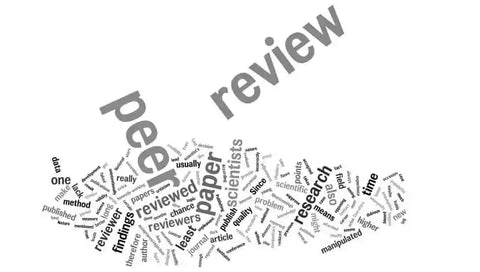如何找出期刊的影響因子
有許多很好的理由可以說明,對於發表研究成果的學者和科學家來說,了解如何找到期刊的影響因子至關重要。 《期刊引證報告》每年提供的期刊影響因子已成為衡量學術期刊在其領域內的影響力和重要性的權威標準。影響因子可以幫助研究人員選擇在他們進行研究時最有用的資源期刊,並最終在傳播研究成果時選擇完美的出版場所。
在了解如何找到期刊的影響因子之前,先了解影響因子到底是什麼會很有幫助。期刊引文報告 (JCR) 中收錄的出版物的期刊影響因子 (JIF) 是根據該年對該期刊前兩年發表的研究文章和其他可引用項目的所有引用情況逐年計算得出的。例如,某期刊 2018 年的影響因子將根據 2018 年期間對該期刊 2016 年和 2017 年期刊中文章的所有引用次數計算得出。 2018 年的影響因子將於 2019 年以兩個不同版本發布:科學版和社會科學版,每個版本都包含數千種按學科類別組織的期刊。
如何找到科學和社會科學期刊的影響因子 正在探索學術期刊以獲取研究資源或出版場所的研究人員可能會在期刊自己的網站上遇到特定期刊的影響因子。信譽良好的同行評審期刊肯定會在其網站上顯示準確的影響因子,而一些出版多種期刊的期刊(例如 Elsevier 和 Springer)甚至會發布其出版物的當前影響因子列表,尤其是對於評價較高的期刊。使用您感興趣的出版商名稱簡單搜尋「Elsevier 影響因子」或類似內容即可開始。在某些情況下,也會列出其他影響力衡量指標,因此要找到 JCR 影響因子,必須特別尋找期刊影響因子或縮寫 JIF。儘管還有其他完全可靠且有用的引用和影響力指標(例如 SCImago 期刊排名或 SJR),但眾所周知,掠奪性出版商會誇大其期刊的影響力。對虛假指標的研究還表明,全球影響因子 (GIF)、通用影響因子 (UIF) 和 CiteFactor 經常被掠奪性出版商使用,因此如何找到期刊的影響因子應該始終包括謹慎使用期刊自己網站上提供的資訊。
為了絕對確定您發現可靠的學術期刊 JCR 影響因子,您必須訪問 JCR 專用網站,該網站不開放存取。但是,大多數研究機構都訂閱了 JCR,因此透過大學圖書館造訪網站通常相對簡單。從 JCR 登入頁面導覽至「按期刊瀏覽」主頁,然後開始在左上角的「前往期刊簡介」搜尋框中輸入期刊的標題。這裡的預設值是針對最近的 JCR 年份以及科學和社會科學版本設定的,但左側的選項可用於更改這些值並以其他方式限定搜尋。輸入標題後,JCR 資料庫中與您的搜尋相符的標題將會顯示出來。點擊您要選擇的標題,然後前往該期刊的 JCR 簡介頁面,該頁面提供有關該期刊、其出版商、其主題類別和引用指標的各種資訊。
在期刊的簡介頁面上,提供了適用於當前(最近)年份的期刊的 JIF,以及 JIF 計算、JIF 趨勢圖、引用分佈圖和對該年 JIF 有貢獻的項目清單。點擊圖表上方的「所有年份」而不是「當前年份」將開啟期刊簡介頁面的版本,其中包含該期刊被納入 JCR 的所有年份的指標。所有年份的關鍵指標圖表在其第三列(從左到右閱讀)列出了每年的 JIF,以便進行時間上的比較。圖表中的其他欄位記錄了每年的總引用次數、5 年影響因子、出版當年引用的即時性指數、特徵因子得分等。點擊列標題下的「圖表」一詞即可查看每列中顯示的數據,而點擊圖表中突出顯示的值將顯示計算該年度特定指標的數據。
為什麼選擇我們的編輯和校對服務?
在 Proof-Reading-Service.com,我們透過龐大且極其敬業的學術和科學專業團隊提供最高品質的期刊文章編輯、論文校對和線上校對服務。我們所有的校對人員都是英語母語人士,擁有研究生學位,他們的專業領域涵蓋了廣泛的學科,因此我們能夠幫助我們的國際客戶進行研究編輯,以改進和完善各種學術手稿,從而成功出版。我們的稿件編輯和校對團隊中許多經過精心培訓的成員主要負責擬在學術期刊上發表的文章,運用嚴格的期刊編輯標準,確保每篇論文中使用的參考文獻和格式符合期刊對作者的指示,並糾正任何語法、拼寫、標點或簡單的打字錯誤。透過這種方式,我們使客戶能夠以清晰準確的方式報告他們的研究,以打動收購校對員並實現出版。
我們為各種科學期刊論文的作者提供的科學校對服務尤其受歡迎,但我們也提供手稿校對服務,並擁有校對和編輯所有學術學科以及其他學科手稿的經驗和專業知識。我們的團隊成員專門從事醫學校對服務,我們的一些專家專門致力於論文校對和手稿校對,透過最嚴格的博士論文編輯和期刊文章校對實踐,為學者提供提高格式和語言使用能力的機會。無論您是在準備會議論文以供展示,完善進度報告以供與同事分享,還是面臨編輯和完善任何類型學術文獻以供出版的艱鉅任務,我們專業團隊的合格成員都可以提供寶貴的幫助,讓您對您的書面作品更有信心。
如果您正在為學術或科學期刊準備一篇文章,或者計劃在不久的將來實現這一目標,那麼您可能會對一本新書《期刊出版指南》感興趣,該書可在我們的「期刊發表研究成果的技巧和建議」網站上找到。








